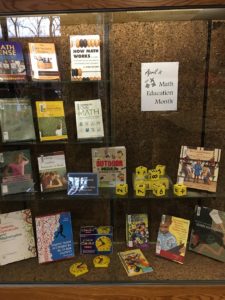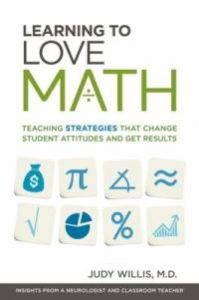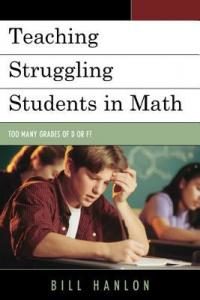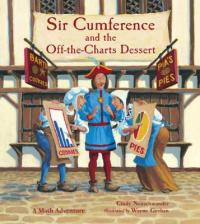This April, stop by the OISE Library to check out some of these books on math education! On display are books addressing a wide range of issues in math education, covering everything from developing better instructional skills to early childhood math education to strategies for learners struggling in math.
 Parents who are interested in better understanding the math that their children are learning will find that How Math Works: A Guide to Grade School Arithmetic for Parents and Teachers is a helpful resource. This book provides a broad overview of mathematical concepts and will help parents and teachers explain these concepts to their children more effectively. Teachers and parents of young children may also want to check out Helping Children Learn Mathematics for an introductory overview of early childhood math education. This textbook is geared toward elementary school math teachers and has been adapted for Canadian math curricula. Math Sense: The Look, Sound, and Feel of Effective Instruction is replete with resources for elementary school math teachers to improve their instructional skills. This book breaks down each teaching concept, not only defining the concept, but explaining why it is used, when it is useful, and providing examples of how it might be applied. High school math teachers, meanwhile, will find The Math Teacher’s Toolbox: How to Teach Math to Teenagers and Survive to be an excellent reference book, full of classroom resources and suggestions to improve student learning. Topics covered include fostering inquiry-based learning and responses to the common question “When will I ever use this?”
Parents who are interested in better understanding the math that their children are learning will find that How Math Works: A Guide to Grade School Arithmetic for Parents and Teachers is a helpful resource. This book provides a broad overview of mathematical concepts and will help parents and teachers explain these concepts to their children more effectively. Teachers and parents of young children may also want to check out Helping Children Learn Mathematics for an introductory overview of early childhood math education. This textbook is geared toward elementary school math teachers and has been adapted for Canadian math curricula. Math Sense: The Look, Sound, and Feel of Effective Instruction is replete with resources for elementary school math teachers to improve their instructional skills. This book breaks down each teaching concept, not only defining the concept, but explaining why it is used, when it is useful, and providing examples of how it might be applied. High school math teachers, meanwhile, will find The Math Teacher’s Toolbox: How to Teach Math to Teenagers and Survive to be an excellent reference book, full of classroom resources and suggestions to improve student learning. Topics covered include fostering inquiry-based learning and responses to the common question “When will I ever use this?”
 Students’ lack of interest and engagement is a common challenge faced by math teachers. Both Motivating Mathematics: Engaging Teachers and Engaged Students and Motivation Matters and Interest Counts: Fostering Engagement in Mathematics explore the underlying causes of learners lack of motivation and provide suggestions to improve motivation and student engagement in the math classroom. Further strategies for fostering student engagement are raised in Learning to Love Math: Teaching Strategies that Change Student Attitudes and Get Results. Suggestions include methods for reducing mistake anxiety and ways to bring the real-world applications of math into the classroom.
Students’ lack of interest and engagement is a common challenge faced by math teachers. Both Motivating Mathematics: Engaging Teachers and Engaged Students and Motivation Matters and Interest Counts: Fostering Engagement in Mathematics explore the underlying causes of learners lack of motivation and provide suggestions to improve motivation and student engagement in the math classroom. Further strategies for fostering student engagement are raised in Learning to Love Math: Teaching Strategies that Change Student Attitudes and Get Results. Suggestions include methods for reducing mistake anxiety and ways to bring the real-world applications of math into the classroom.
 Another common challenge in math education are learners who struggle with math: what is the best way for teachers to engage these students and ensure that they are not left behind? Making Math Accessible for the At-Risk Student provides a comprehensive look at struggling learners, addressing everything from the reasons students may struggle with math (such as math anxiety, gaps in basic skills, or difficulty maintaining concentration), obstacles to success, strategies for keeping students engaged, and a plethora of teacher resources and classroom activity pages. The recommendations made in Teaching Struggling Students in Math: Too Many Grades of D or F? are designed so that they may be readily implemented by teachers in their classrooms and cover a broad spectrum of areas, from designing more worthwhile homework assignments to improved student-teacher relationships. For children with specific learning needs such as autism or dyscalculia, books such as Dyslexia, Dyscalculia, and Mathematics: A Practical Guide and Mathematics for All: Instructional Strategies to Assist Students with Learning Challenges offer strategies, resources, and alternative approaches to help reinforce mathematical skills.
Another common challenge in math education are learners who struggle with math: what is the best way for teachers to engage these students and ensure that they are not left behind? Making Math Accessible for the At-Risk Student provides a comprehensive look at struggling learners, addressing everything from the reasons students may struggle with math (such as math anxiety, gaps in basic skills, or difficulty maintaining concentration), obstacles to success, strategies for keeping students engaged, and a plethora of teacher resources and classroom activity pages. The recommendations made in Teaching Struggling Students in Math: Too Many Grades of D or F? are designed so that they may be readily implemented by teachers in their classrooms and cover a broad spectrum of areas, from designing more worthwhile homework assignments to improved student-teacher relationships. For children with specific learning needs such as autism or dyscalculia, books such as Dyslexia, Dyscalculia, and Mathematics: A Practical Guide and Mathematics for All: Instructional Strategies to Assist Students with Learning Challenges offer strategies, resources, and alternative approaches to help reinforce mathematical skills.
 The OISE Library also has a number of books about math to engage young children, including picture books. Sir Cumference and the Off-the-Charts Dessert is a fun tale about pies, cookies, pie charts, and bar graphs. The Lost Key and The Hundred-Dollar Robber come from a series of math-based mysteries told in comic-book form. Creative approaches to math can be especially helpful for engaging young children: Cowboys Count, Monkeys Measure, and Princesses Problem Solve: Building Early Math Skills Through Storybooks shows how parents and teachers can build math skills by engaging their imaginations and creating meaningful contexts for mathematical concepts through storytelling. And for those of you interested in math-based activities designed for young children, try Outdoor Math: Fun Activities for Every Season.
The OISE Library also has a number of books about math to engage young children, including picture books. Sir Cumference and the Off-the-Charts Dessert is a fun tale about pies, cookies, pie charts, and bar graphs. The Lost Key and The Hundred-Dollar Robber come from a series of math-based mysteries told in comic-book form. Creative approaches to math can be especially helpful for engaging young children: Cowboys Count, Monkeys Measure, and Princesses Problem Solve: Building Early Math Skills Through Storybooks shows how parents and teachers can build math skills by engaging their imaginations and creating meaningful contexts for mathematical concepts through storytelling. And for those of you interested in math-based activities designed for young children, try Outdoor Math: Fun Activities for Every Season.
The OISE Library has many math-based activity kits! On display are the Foam Dice, which can be used to teach about probability, and the Geared Clocks, to teach time measurement. The math activity kits in the OISE collection cover everything from probability and geometry to patterning and algebra. Check out the OISE Library Manipulatives Database to find a kit suited to your needs.
Stop by the book display in the OISE Library lobby to take a look at these books on math education! All books on display are available to be checked out. Don’t hesitate to ask staff for assistance in accessing the display case.
